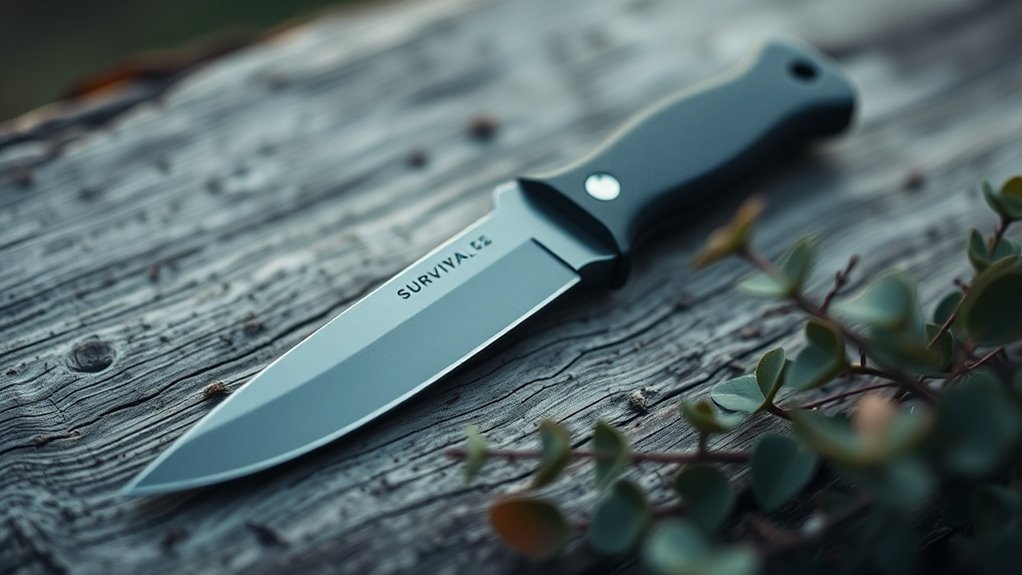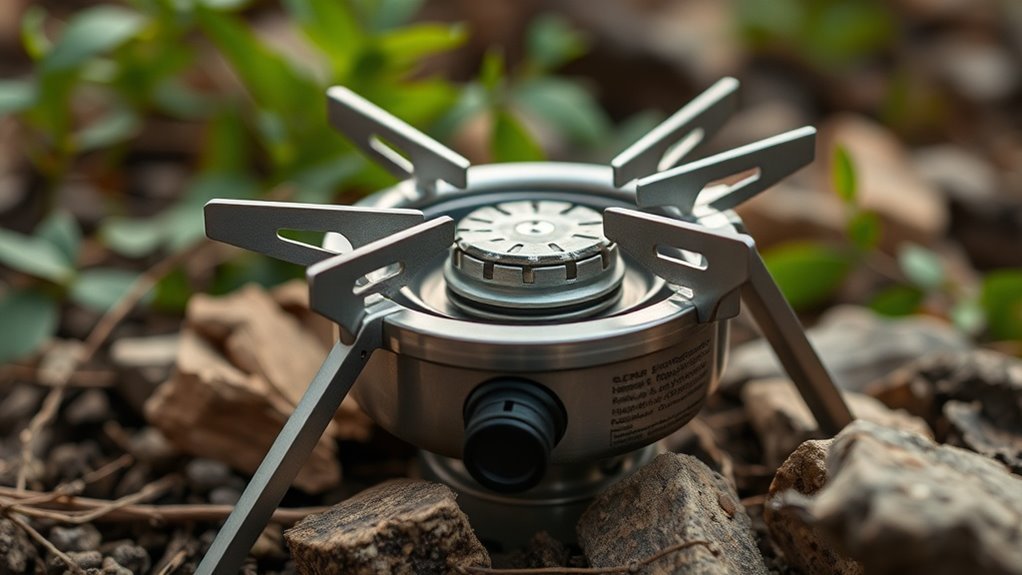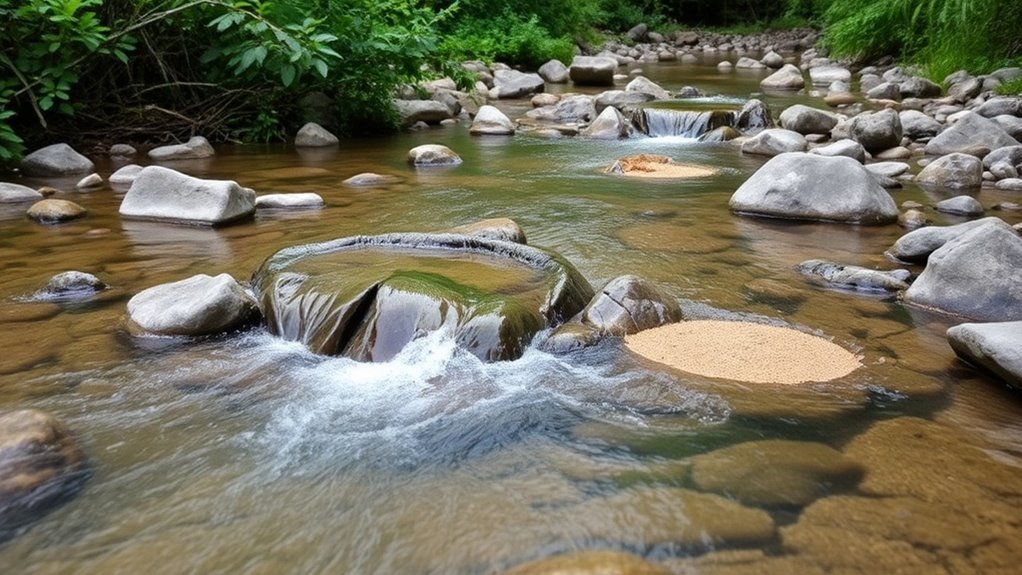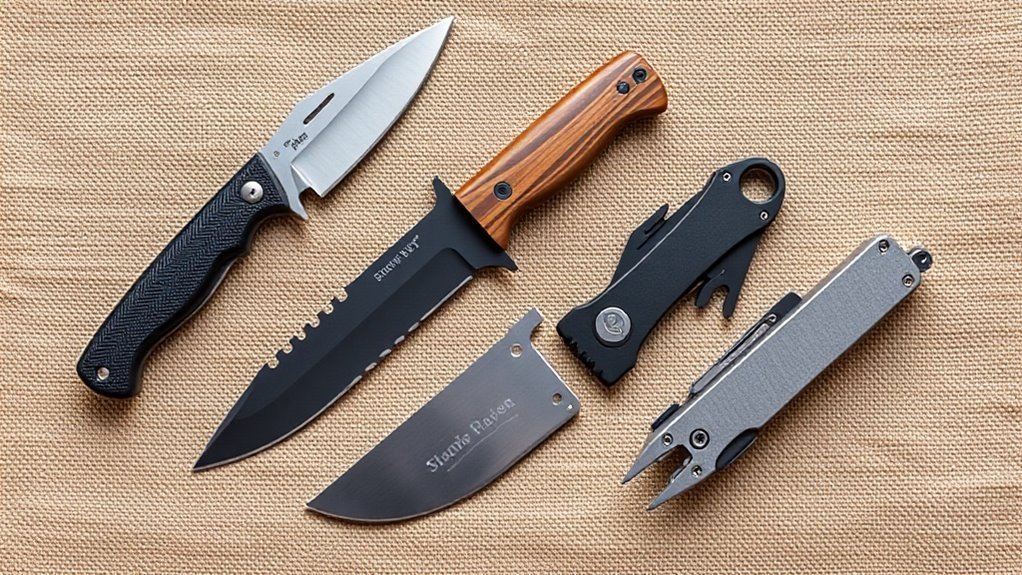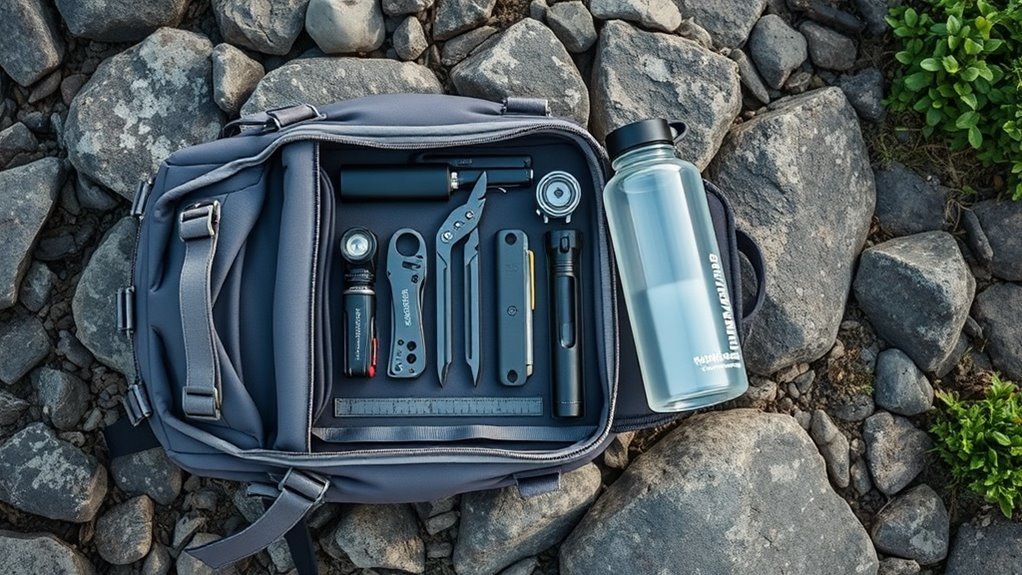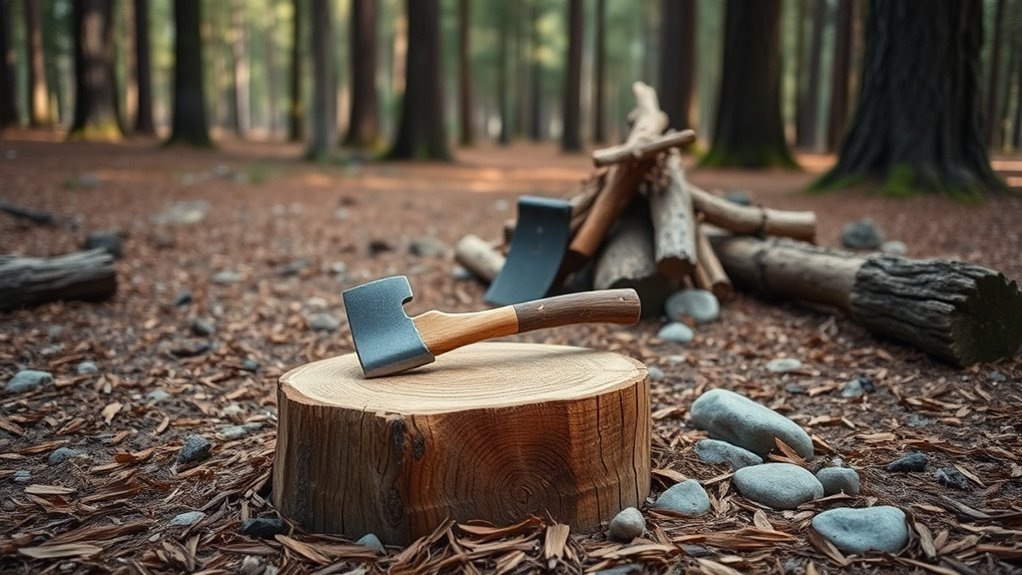Fire Starters: Friction, Flint, and Modern Alternatives
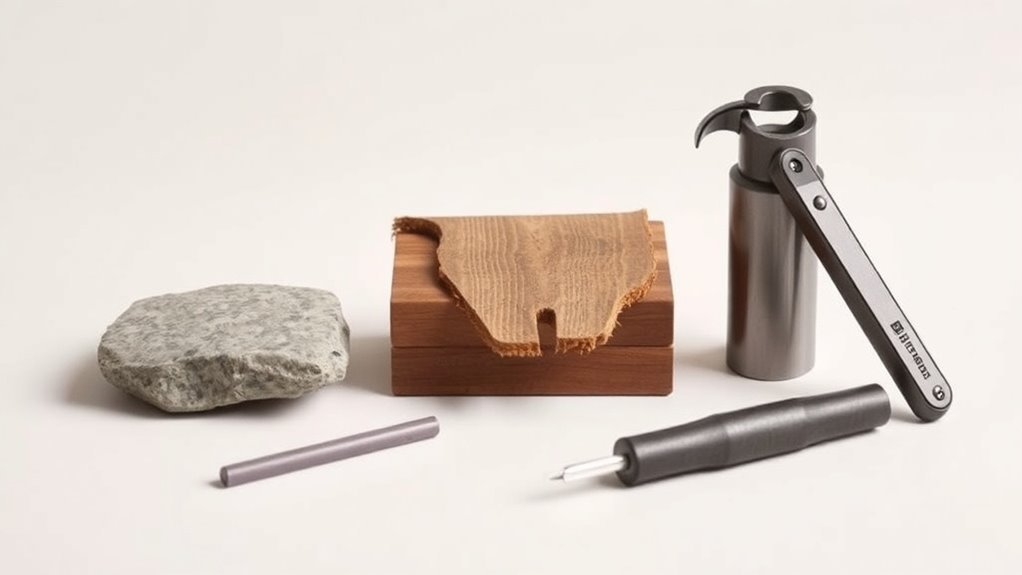
Fire starters, like friction, flint, and modern alternatives, are essential for ensuring reliable ignition in survival situations. Friction methods, such as the bow drill, require practice but can be effective. Flint produces sparks for quick lighting. Modern options like rechargeable lighters and chemical fire starters offer convenience and reliability, especially in emergencies. When choosing a fire starter, consider your environment and the ease of use. Explore more about selecting the best fire starter for your needs.
Key Takeaways
- Friction-based methods like the hand drill and bow drill require skill and practice but can ignite a fire using natural materials.
- Flint and steel offer a reliable way to produce sparks, making them favored for portability and effectiveness in various conditions.
- Modern fire starters, such as rechargeable lighters or chemical igniters, provide quick ignition and are designed for ease of use.
- Waterproof matches and fire starter pellets are specifically designed to perform well in damp conditions, ensuring reliable fire starting.
- When choosing fire starters, consider the specific environment, weather conditions, and safety requirements to ensure effective use.
The Significance of Fire in Survival Situations
When you find yourself in a survival situation, the ability to start a fire can make all the difference. Fire provides warmth, essential for body temperature regulation in cold environments. It offers protection from predators, creating a safe zone where you can rest.
Additionally, fire’s light can help navigate in darkness and signal for help. You can also use fire to purify water and cook food, making both safer and more palatable.
Beyond physical survival, the psychological comfort of fire can’t be overlooked; it boosts morale and helps keep spirits high during challenging times. Mastering fire-starting skills is pivotal, as they empower you to control your environment and increase your chances of surviving until rescue.
Traditional Fire-Starting Techniques: An Overview
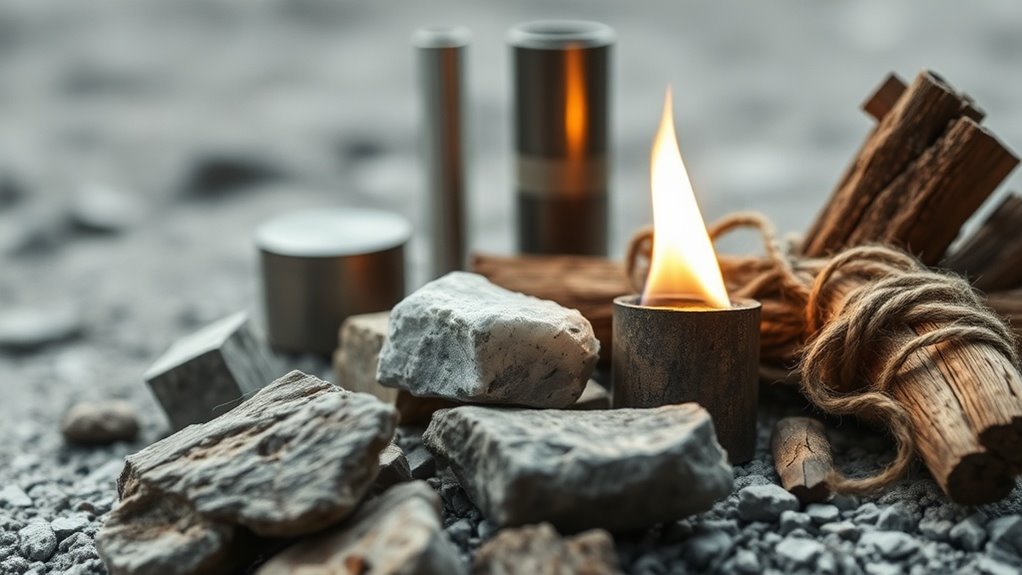
While modern technology has introduced numerous fire-starting tools, traditional techniques remain invaluable, especially in wilderness survival situations. You can rely on simple methods like friction and striking flint for igniting a fire when you’re off the grid. Here’s a quick overview of some popular techniques:
| Technique | Description |
|---|---|
| Hand Drill | Uses rotating a wooden spindle in a base for friction heat. |
| Bow Drill | Utilizes a bow to rapidly spin a spindle, enhancing friction. |
| Flint and Steel | Strikes steel against flint to create sparks. |
| Fire Plough | Scrapes wood together to generate fine shavings that ignite. |
| Fire Piston | Compressed air ignites tinder by striking a piston sharply. |
Mastering these skills can be a game-changer in survival scenarios.
Mastering the Bow Drill Method
The bow drill method builds on traditional fire-starting techniques, offering a more efficient way to generate heat through friction.
To master it, you’ll need a few key components: a spindle, a fireboard, a bow, and a socket.
Start by securing the fireboard on a stable surface. Create a small notch and place your spindle on top. Wrap the bow cord around the spindle and pull it back and forth, creating friction.
As you do this, apply downward pressure with the socket to maintain contact. Watch for fine ash and glowing dust—they indicate that heat is building up.
Once you see an ember, transfer it to your tinder bundle. With practice, you’ll be able to ignite a fire with confidence and skill.
Understanding Flint and Steel
When you think about starting a fire with flint and steel, understanding the properties of flint is essential.
The way you strike the steel can make all the difference in producing sparks.
Let’s explore these elements to master this classic fire-starting technique.
Flint Properties Explained
Understanding the unique properties of flint can greatly enhance your fire-starting experience.
Flint is a hard, sedimentary rock that fractures with a conchoidal shape, producing sharp edges. These edges allow it to create sparks when struck against steel, which is essential in traditional fire-starting methods. The silica content in flint contributes to its durability and effectiveness, making it a reliable choice for igniting tinder.
Furthermore, flint retains heat well, helping to sustain a spark long enough for you to coax a fire to life. When sourcing flint, look for pieces with smooth surfaces for better strikes.
Familiarizing yourself with its properties will enable you to utilize flint more effectively, increasing your chances of successfully starting a fire.
Steel Striking Techniques
Mastering a few key steel striking techniques can dramatically improve your ability to generate sparks with flint.
First, you’ll want to hold your steel at a slight angle against the flint, about 30 degrees. This position allows for better friction and spark production.
Next, hit the flint with a quick, firm motion. It’s all about precision; striking too hard can waste energy and dull your steel.
You’ll also want to aim for the edge of the flint for ideal spark creation. Practice using different speeds and angles to see what produces the best results.
Finally, maintain your tools; a clean steel surface prevents rust and boosts your striking efficiency for a reliable spark every time you need it.
Exploring Other Friction-Based Techniques
While you might be familiar with traditional methods of creating fire through friction, there are several innovative techniques worth exploring.
One approach is the bow drill, where you use a cord to spin a spindle against a fireboard. This technique requires practice, but it can yield fast results.
Another method involves the hand drill, using a straight spindle rotated between your palms. This requires more effort but can be rewarding when you succeed.
Using a hand drill to start a fire demands dedication, but the satisfaction of success makes it worthwhile.
You might also consider the fire plough, where you push a stick along a groove in a softwood base, creating friction.
Each of these methods not only enhances your fire-starting skills but also deepens your appreciation for primitive techniques that have been used for centuries.
Advantages of Modern Fire-Starting Tools
Modern fire-starting tools make igniting a blaze effortless, even for beginners.
You can rely on them under various weather conditions, ensuring your outdoor adventures aren’t hindered by rain or wind.
With these innovations, starting a fire isn’t just easier but also more dependable.
Ease of Use
When you’re ready to ignite a fire, the ease of use offered by modern fire-starting tools can make all the difference. Unlike traditional methods, which can require skill and practice, modern tools are designed to be user-friendly.
A good lighter or fire starter isn’t just convenient; it’s often as simple as a flick of your thumb or a shake of your wrist. Plus, they typically ignite quickly, saving you time and frustration when you’re in a hurry.
Many come with built-in safety features, too, ensuring you won’t accidentally start a fire when you don’t mean to. Investing in one of these tools can make your outdoor adventures more enjoyable, letting you focus on the experience rather than struggling to start a fire.
Reliability in Weather
Having the right tools is only half the battle; the conditions you face outdoors can greatly impact your fire-starting success.
Modern fire-starting tools are designed to work reliably, even in challenging weather. Whether it’s rain, wind, or cold, these tools can make the difference between warmth and discomfort. For instance, waterproof matches or lighters can ignite wet tinder, while magnesium fire starters provide dependable sparks regardless of moisture levels.
When the temperature drops, quick-ignition options guarantee that you won’t waste precious energy struggling to get a fire going. With these modern alternatives, you’re less likely to face failure due to unpredictable weather.
Rechargeable Lighters: Convenience and Reliability
While many traditional lighters rely on disposable fuel sources, rechargeable lighters offer a blend of convenience and reliability that makes them increasingly popular. You don’t have to worry about running out of butane or refilling your lighter frequently.
With a simple USB charging option, you can keep your lighter ready for use without the hassle of replacements. These lighters also feature innovative plasma arcs instead of flames, providing a wind-resistant ignition source.
Plus, their sleek design makes them easy to transport and store. Whether you’re camping, lighting a candle at home, or starting a barbecue, rechargeable lighters are a practical choice that combines modern technology with everyday functionality.
Embrace the ease and sustainability they offer!
Chemical Fire Starters: How They Work
Although many people rely on traditional methods to start a fire, chemical fire starters provide an effective alternative that can quickly ignite a flame.
These starters usually contain combustible materials, such as wax, wood shavings, or chemical compounds, designed to create intense heat. When you apply a spark or flame, the chemical reaction generates enough heat to light your tinder.
Chemical fire starters contain combustible materials that generate intense heat, ensuring reliable ignition of your tinder.
Some chemical fire starters, like magnesium sticks, burn very hot and can ignite even in damp conditions, ensuring reliability.
Others are pre-packaged in convenient formats, eliminating the hassle of preparation. Recognizing how they work means you can decide on the best type for your needs, and they’re particularly useful for camping, emergencies, or when conditions are less than ideal.
Tips for Choosing the Right Fire Starter for Your Needs
When it comes to selecting a fire starter, understanding your specific needs makes all the difference.
Think about where you’ll be using it—outdoors, at home, or during emergencies. For camping trips, lightweight options like magnesium blocks or flint and steel are ideal. If you need a quick solution, chemical starters like lighter cubes or gel fuels are highly effective.
Consider the weather conditions too. Windy or rainy environments might require a more reliable option such as waterproof matches or fire starter pellets.
Always check the ease of use; you don’t want a complicated process when you’re trying to start a fire quickly.
Finally, think about safety—ensure your fire starter is safe to use, especially around children or pets.
Questions
Can Fire Starters Be Used in Wet Conditions?
Yes, fire starters can work in wet conditions, but their effectiveness varies. You’ll need to make sure they’re dry or use water-resistant options. Choosing the right material can greatly improve your chances of starting a fire.
How Do You Prolong the Lifespan of a Fire Starter?
Think of your fire starter as a cherished flame; to prolong its life, keep it dry, store it carefully, and avoid unnecessary friction. Treat it gently, and it’ll serve you well through countless adventures.
Are There Fire Starters Safe for Children to Use?
Yes, there are child-safe fire starters available, designed specifically for young users. Look for options that feature safety locks, easy-to-use methods, and non-toxic materials, ensuring a fun and safe experience while learning about fire.
What Is the Best Fire Starter for Backpacking?
Imagine a tiny spark igniting a world of warmth. For backpacking, consider magnesium fire starters or waterproof matches. They’re compact, reliable, and fit snugly in your gear, ensuring you can summon flames in the wilderness.
How Do I Maintain My Modern Fire-Starting Tools?
You should regularly clean your fire-starting tools, store them in a dry place, and check for any damage. Replace materials as needed, ensuring everything’s in good working order before your next backpacking adventure.
Conclusion
In wrapping up, knowing how to start a fire, whether with traditional methods or modern tools, is essential for survival. For instance, imagine being stranded in the wilderness during a storm—having a rechargeable lighter could mean the difference between staying warm and safe or facing hypothermia. By understanding your options and choosing the right fire starter, you can be prepared for whatever challenges come your way, ensuring you can light your way, no matter the circumstances.

